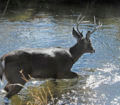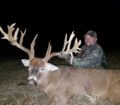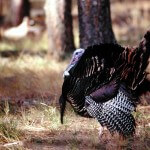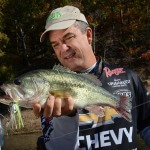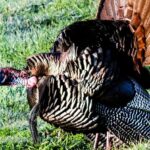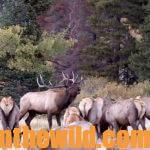Editor’s Note: Simply finding a deer trail won’t provide enough information to hang a tree stand and plan to hunt that trail. Many ingredients make some deer trails better than others. To effectively hunt trails, you need to know:
* why and when the deer use the trail;
* where the deer will go; and
* what time of day or night the deer will move down the trail.
With this information, you can hunt trails and take deer more productively than a hunter who simply finds a trail and hangs a tree stand. Let’s take a closer look at some different types of deer trails, and what you can learn from these trails to help you hunt deer more effectively.
Hunting the buck as he goes to his bed presents another hunting opportunity. In most areas when deer encounter intense hunting pressure, they will move to their beds just at daylight. By locating a buck’s food source and where he beds, you can place your stand and climb in it before daylight. One of my hunting buddies emphasizes that, “I get as close to a bedding area as I can without disturbing the deer, so I have the most light. I hunt farther off the trails than most people I know and always on the downwind side. I think one of the mistakes someone can make is hunting too close to where he anticipates taking the shot.”
When scouting a bedding region, spend as little time as possible to determine where to put your tree stand. Deer won’t feel secure in a bedding area if they detect human odor. Always scout bedding sites in advance of deer season, before the bucks become so sensitive to human sightings and smell. Also don’t cross any bedding trails if you can avoid them and go out of your way to not cross them.
Other hunters report that you never should hunt a deer’s bedding area when the wind’s blowing in the wrong direction. If you’re hunting next to lowlands, remember air usually will move from higher elevations to the lower part of a hollow in the evenings. So, set-up on the lower side of the trail going to and from where the deer’s bedding. If you plan to hunt a bedding trail in the morning, don’t forget that because air rises at that time, you should place your tree stand on the upper side of the trail. If you can’t get to a bedding site well before daylight and be on your stand that’s set-up with a favorable wind direction, then hunt another place that day. If you spook a buck coming to his bed, more than likely that’s the last time you’ll see that animal during the season.
Apartment buildings, hotels and department stores all have fire escapes. Even elevators have trapdoors in their ceilings for people to escape danger. The whitetail realizes the presence of danger in his environment, especially during hunting season. That’s why the buck has certain, pre-determined paths he uses to escape danger. Often these trails won’t look well-defined and may show little wear. I once discovered an unusual escape trail under a bridge. Each morning before hunting season when I scouted, I noticed a nice buck in a green field on a club I hunted. However, when the season arrived, I rarely saw the buck in the field but would spot him on the opposite side of the creek at first light as I went into the woods to hunt.
After scouting for several weeks, I still couldn’t pinpoint how the buck got away from the field to the opposite side of the creek. Finally one morning, I left to hunt somewhat earlier and found the buck a little late leaving the green field. I watched as he walked under the bridge I traveled across to go hunting. When daylight came, I found the buck’s trail where it went into the water just below the field. Checking under the bridge, I saw a small sandbar with plenty of tracks going both ways the buck had used to travel back and forth to the field. I told a friend of mine about this escape route, and the following morning, he took the buck.
I’m totally convinced many of us waste thousands of hours hunting over trails deer never use during daylight hours. To decide whether or not a deer uses a trail at night, check the numbers of tracks on it, and whether the trail goes straight in one direction. Deer don’t meander along these trails and feed, walk these trails in search of does or take these paths to and from food sources during daylight hours. Like us when we’re traveling from one point to another, deer will take a woods’ interstate, because it is the most direct route. However, if we want to pick up a date, get something to eat or have a visit with friends, we must get off the highway, and so must deer. You easily can see these night trails in open woodlots. To determine whether or not these paths have deer on them, use a trail timer. But remember, the ease of locating these well-defined night trails means many people will hunt here, although usually the trails will have the most hunting pressure during daylight hours. To avoid the hunter, the deer using this trail only will come out after dark.
After gathering information about where the deer go and why they travel to these regions as well as when, put a tree stand where you think you can bag a buck. When a big buck moves down that deer highway at a time you’ve pre-determined he will, and you sight in on your target, you’ll understand immediately why all your research and scouting for trails has been worthwhile.
To learn more about hunting deer with John E. Phillips’ Amazon Kindle eBooks, print books and Audible books (the latest Audible is “How to Hunt Deer Like a Pro”) and Nook books, click here at https://johninthewild.com/books/#deer. You can type in the name of the book and download it to your Kindle, and/or download a Kindle app for your iPad, SmartPhone or computer. For a free download on how to make jerky from venison to provide a protein-rich snack, choose “How to Prepare Venison Jerky: The Ultimate Snack Food” at johninthewild.com/free-books.

